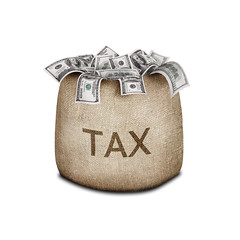Baseball Update
Sep 07
It’s September already, and baseball season is winding down (unless you’re a fan of the Cubs, in which case the season has been over for a long time).
This is always a bittersweet time of the year. I love pennant races and the playoffs, but hate to see the season end. As always, this has been a strange and wonderful season. Let’s look back.
First, of course, we’ll start with my Colorado Rockies. It’s been a disappointing season at Coors Field. The Rockies started out 11-1 before fading out of contention in May. Injuries played a part (particularly with the pitching staff), as did sub-par offensive performances by some players.
The biggest news of the season, of course, was the trade of Ubaldo Jimenez to the Indians. I like Ubaldo, but when you get the chance to nab Drew Pomeranz in a trade, while also picking up some other pieces, you have to make the deal. Pomeranz is recovered from an appendectomy and will make his major league debut on Sunday against the Reds.
Troy Tulowitzki continues to make the case that he is the best all-around shortstop in the game – and one of the best players, period. While playing gold glove caliber defense, Tulo has also contributed a .305 average with 30 homers and 103 RBI. How impressive is that? His closest pursuer among NL shortstops in homers and RBI is Jimmy Rollins of the Phillies. Rollins has 14 homers and 58 RBI – 16 homers and 45 RBI behind Tulo. And while Tulo is indeed killing the ball at Coors Field (.960 OPS), he’s also posted superb numbers on the road (.897 OPS). Considering that the typical hitter has an OPS 31 points higher at home, Coors doesn’t seem to be inflating Tulo’s numbers much at all (especially if you believe in the existence of a Coors Hangover).
If the Rockies were in contention, it would be difficult to argue against Tulo as the MVP.
One of the most unappreciated performances in baseball is coming from another Rockie, Chris Iannetta. Iannetta is much criticized for his poor batting average (.238), but a high number of walks elevates his OBP to a quite good .370, and he has 12 homers in just 320 at bats. I’m sure the Rockies are going to cut ties with Chris at some point, and a team that properly utilizes him is going to get good value.
The most disappointing performance for me this year was Ian Stewart. I’ve always liked Stewie, and he has shown good power (54 homers in 1242 career at bats) but has struggle to make consistent contact. His batting average sank to a career low .156 this year and stands at .236 for his career – not high enough for a third baseman. He’s been in a funk all year, and with just 122 at bats, didn’t get a chance to hit his way out of it. I think a lot of people forget that Stewie is still just 26. I see him as a possible reclamation project – but probably in another uniform.
OK, so what’s going out outside Denver?
Justin Verlander is kindling the argument of whether or not a pitcher can be MVP. Personally, I’m OK with this. While it’s true that a starting pitcher plays only once every five days, his impact on those games is far greater than the impact of any other player. Verlander is already at 21 wins and is the main reason why the Tigers were able to push the Indians aside and claim first place in the AL Central.
Zach Greinke made news in the spring with an basketball-related injury and then got off to a slow start. However, after posting a 5.45 ERA prior to the All Star break, he has a 2.41 ERA since.
How good are the Phillies pitchers? Four of them have 11 or more wins and an ERA of 2.85 or better (Halladay and Lee are a combined 32-12 with a 2.48 ERA). Conventional wisdom suggest using a three man rotation in the playoffs – but might the Phillies go four deep and have their guys 100% fresh for each start?
Remember when Albert Pujols was going to miss a couple of months with an injury and cost himself a bunch of money when he wouldn’t be able to prove that he still had his power? I think he’s OK.
The National League has no interesting races this year. The closest divisional race is the NL West, where the Diamondbacks hold a 6 game lead over the Giants. Even the wild card race is a yawner, with the Braves holding a 7.5 game lead over the Cardinals. In the AL, the Yankees and Red Sox are having their annual battle for the division title, with the Devil Rays putting together yet another strong season. The Rangers hold a 3.5 game lead on the Angels in the best “loser stays home” race. Angels rookie Mike Trout has hooked some media attention by making the best of his second call-up to the majors, stringing five homers on his line in just 84 at bats. Is the 20 year old from Jersey up for good?
And finally … we’re a week away from the release of Moneyball. I hope the movie is as good as the book (but I doubt it will be).
Sports
Albert Pujols, Justin Verlander, Moneyball, Troy Tulowitzki
 RSS
RSS


